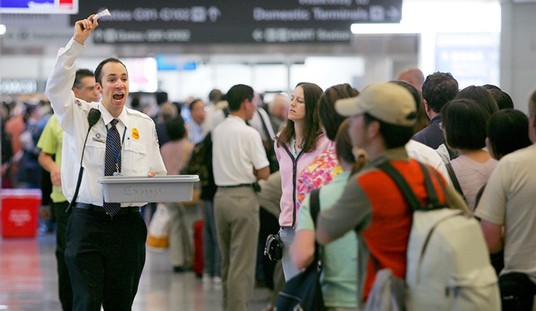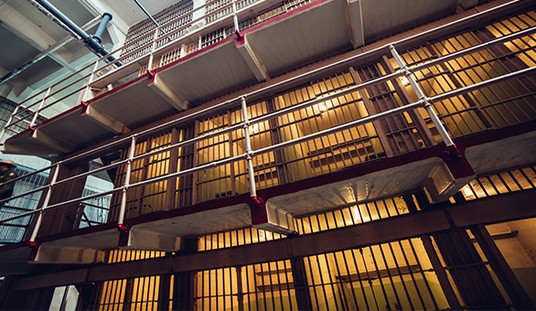The failure of America’s education system, at all levels, is not news to anyone who has been paying attention. But things may actually be worse than you think. The National Assessment of Education Progress (NAEP) has brought receipts.
The latest National Assessment of Educational Progress (NAEP) results in reading and math, released in June, are appalling. The scores on the test, also known as “The Nation’s Report Card,” administered in October–December 2022, showed the steepest declines for 13-year-olds since the tests began.
“The mathematics decline for 13-year-olds was the single largest decline we have observed in the past half a century,” explains Peggy Carr, commissioner of the National Center for Educational Statistics (NCES). “The mathematics score for the lowest-performing students has returned to levels last seen in the 1970s, and the reading score for our lowest-performing students was actually lower than it was the very first year these data were collected, in 1971.”
It’s a common tactic to blame this on the ill-advised COVID lockdowns, but the NAEP’s data blows that away as well.
Most analysts blame students’ dismal showing on the Covid-induced shutdowns that gripped public education in 2020 and 2021. The hysterical response to the pandemic certainly did damage. But, as Kevin Mahnken notes for The 74, the latest scores, which highlight long-term trends that extend back to the 1970s, “widen the aperture on the nation’s profound academic slump.” In doing so, the latest test serves “as a complement to the 2020 iteration of the same test, which showed that the math and English skills of 13-year-olds had noticeably eroded even before the emergence of COVID-19.”
But why, you ask? Don’t ask the national and state teachers’ unions; they’ll just call for more spending, but the NAEP is ready for that argument as well.
Teachers’ union honchos invariably blame a lack of money. That claim doesn’t add up, to put it kindly. According to NCES data, inflation-adjusted per-pupil spending rose from $7,089 in the 1971–72 school year to $17,013 in 2019–20, a whopping 140 percent increase (figures are adjusted for inflation). Looking at state-by-state comparisons, Texas (demographically similar to California) spends about 25 percent less than the Golden State, yet its students scored about the same on the 2022 eighth-grade NAEP (a few points higher than its California counterparts in math and a few points lower in English). Similarly, teacher salaries in California are the nation’s third-highest, while Texas comes in at number 38 nationally.
Indeed, the teachers’ unions at all levels have been utter failures. They seem far more focused on ensuring “diversity” of plumbing, sexual preferences, and skin color than diversity of thought or philosophy, and now we can see the results. Politicians and the very wealthy, of course, can manipulate the system to their benefit. As my RedState colleague Becky Noble points out, they do not shy away from doing so. Democrats, in particular, notoriously support the failed education system and the teachers’ unions while opting out of that system for their own kids. One need look no further for an example of this hypocrisy than Barack and Michelle Obama.
There are signs that the whole thing is beginning to unravel. A recent Gallup poll tells the tale:
Gallup’s survey of 1,013 adults conducted in June found just 36% of Americans have confidence in higher education, a striking decline from 57% in 2015 and 48% in 2017.
Only 19% of Republicans said they have confidence in America’s higher education, down 37 points from 56% in 2015.
Democrats hold the highest rate of confidence in the higher education system at 59%, a 9-percentage point increase from 2015.
And independents’ confidence decreased by 16 percentage points, from 48% in 2015 to 32% in 2023.
Americans, it seems, are not hot for teacher.
The answer? It’s a big ask, but the obvious answer is to privatize the whole thing. Defund the federal Department of Education and shut it down. There is, after all, no constitutional authority for the federal government to be involved in education at all. The only government involvement should be city and county school boards — if that. Frankly, it would be better to eliminate any government involvement at all. Eliminate the public schools, eliminate the taxes that pay for them, and place the responsibility for education where it belongs, with the parents and the students.
It’s time to try something new. Vouchers and charter schools are a good start; of course, the best answer is to privatize the lot and let a thousand flowers bloom. New schools of every sort would arise quickly, all seeking to take advantage of this new market that has just opened up. And it would be a big market with a big potential for profit; plenty of people would be willing to take it on, and success or failure in that market would be dependent on nothing more than how successful in life the graduates of those institutions prove to be.
If you want to send your kids to the Dylan Mulvaney School for the Terminally Woke, go for it. If you want to send your kids to the Academy of Engineering and Hard Sciences, more power to you. And if a recent high-school graduate wants to go to a tech school for a welding certificate or Oberlin College for a degree in Underwater Ethnic Dog-Polishing, let them fly free.
But that placement of responsibility also means that parents and students must be prepared to deal with the consequences. No student loan forgiveness. If they can’t find a job with their useless degrees, no bailouts, no handouts from the public treasury. They made decisions; now there are consequences. One positive consequence of this would arise very swiftly — all of the various, useless “Studies” degrees at the university level would go away very quickly.
Until we fix education – from which all our other issues are downstream – nothing else can be repaired.














